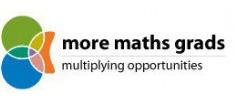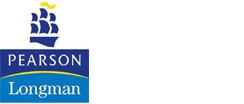Tower of Hanoi
This is a list of resources packs that include the Tower of Hanoi puzzle, or contain similar related activities.
The Tower of Hanoi is a logic puzzle invented in the 19th century. Given a stack of discs arranged from largest to smallest on one rod, move the stack to another rod. Each disk is only allowed to be placed on a larger disk.
What is the smallest number of moves to complete the puzzle?
Online Tower of Hanoi
Interactive Tower of Hanoi game from the NRICH website.
Indices and Standard Form
This indices resource contains 21 instant maths ideas covering: basic understanding of powers, statements for which students are required to say whether the statement is sometimes, always or never true, a number of investigations including finding 'happy numbers', the number of squares on a chess board and the tower of Hanoi.
Mathematical reasoning: activities for developing thinking skills
This resource from SMILE Mathematics contains 27 activities with full teacher's notes and answers.
The activities cover:
Integers, powers and roots: Some sums, Half time scores, Tower of Hanoi
Written methods: Largest product
Equations, formulae and identities: Number pyramids
Sequences, functions and graphs: Shapes and numbers, Up the stairs, Dots, Odd and even chains, 4 in a line, Boxing areas, Frogs puzzle, How many squares?
Geometrical reasoning: lines, angles and shapes: Mobius band, Wiggly tessellations, Without looking, Shapes from triangles, Painted cubes
Transformations: Shapes from squares, Symmetry investigation, Quarters, Tessellating pentominoes
Construction: Drawing integer triangles
Measures and mensuration: Origami boxes, Panorama, Polygons, Follow the path
Jump to It!
A collection of seventy six mathematical activities and investigations aimed at students aged nine to fourteen.
Contents include:
silly rulers, number patterns on calendars, the game of Nim, bus routes, frogs, finding how much paper and string is required to wrap some parcels, dissecting a square, surface area of cubes with holes in the faces, three in a line, palindromic numbers, addition tables, imperial lengths, counting the frequency of 9's in a grid, investigating remainders in divisions, intersections of lines, triangular and rectangular numbers, number chains, New York cops, think of a number problem, finding the number of handshakes for a group, magic squares, Tower of Hanoi, Braille patterns, Fibonacci numbers, growing squares, a practical activity making elliptical wheels, using paper planes to explore aerodynamics, finding the primes.
This collection of investigations was compiled by teachers on a course at the City of Manchester College during the autumn term 1982. This booklet was put together by Gillian Hatch at Manchester Polytechnic
The Active Maths Pack
The Active Maths Pack was produced by the Spode Group at a time when teachers were coming to terms with coursework as a compulsory element of the GCSE mathematics course. The new national criteria for GCSE called for a greater emphasis on investigation, discussion, practical work and problem solving.
The pack has three sections:
Applied coursework contains eight tasks:
1. Games- listing possible outcomes and finding probability.
2. Posting- using mean, mode, median to find averages.
3. Weightlifters - using formulae to plot graphs including log graphs.
4. Transportation - solving transportation problems using a two-way table.
5. Video recording - solving problems involving time.
6. Glazing - calculating area using differing units.
7. Fibonacci - a number of problems that generate Fibonacci sequences.
8. Morse code - constructing tally charts from codes.
Investigations contains eleven tasks. Each task consists of a number of problems based around a mathematical theme. The themes covered are: sequences and number chains; perimeter and area of triangles, parallelograms, trapeziums and sectors of circles; the Tower of Hanoi, Pict's theorem; investigating the relationship betweenn angles and area in right-angled triangles; using spirals to investigate square and cube roots.
Extended projects contains thirty two tasks ideal for developing problem solving strategies. Mathematical toipcs covered are: volume of cuboids and cylinders; area of a circle; percentages; average speeds; rates by comparing fuel comsumption of cars; tessellation; collecting, representing and analysing data; using formulae.
The book contains teacher's notes, solutions and marking schemes.
Enrichment Activities
This booklet, provided by More Maths Grads, has been designed to highlight the ways that mathematics is used in daily life. There are a selection of enrichment activities which include games, card tricks and puzzles that can be used to demonstrate how much fun mathematics can be, as well as the many ways in which it can be applied to an everyday setting.
Students use a sheet of A4 paper and make a hole which allows them to put their head through, perform number tricks, card tricks, and investigate problems which require careful consideration.
Maths Search
These books, written by Jean Head, contain a variety of problems, investigations and practical work for use within the classroom. The problems and investigations that have been chosen mostly required a minimum of pre-lesson preparation and very little in the way of special apparatus.
The students' book is made up of worksheets, which can be used with groups of students, or by individuals. Some are fairly closed and structured in nature whilst others permit a more open-ended and unstructured approach.
Discrete Mathematics
A substantial part of this Nuffield Advanced Mathematics option was about algorithms. Students used calculators, or computers with a structured programming language, to turn algorithms into programs. They were introduced to various aspects of discrete mathematics and, in particular, they were shown how many of these relate to important computational problems.
Robot completing Towers of Hanoi
Alternativley a robot cmpleting the puzzle on an iPhone is here:
https://www.youtube.com/watch?v=ETNpYCq2AN8






